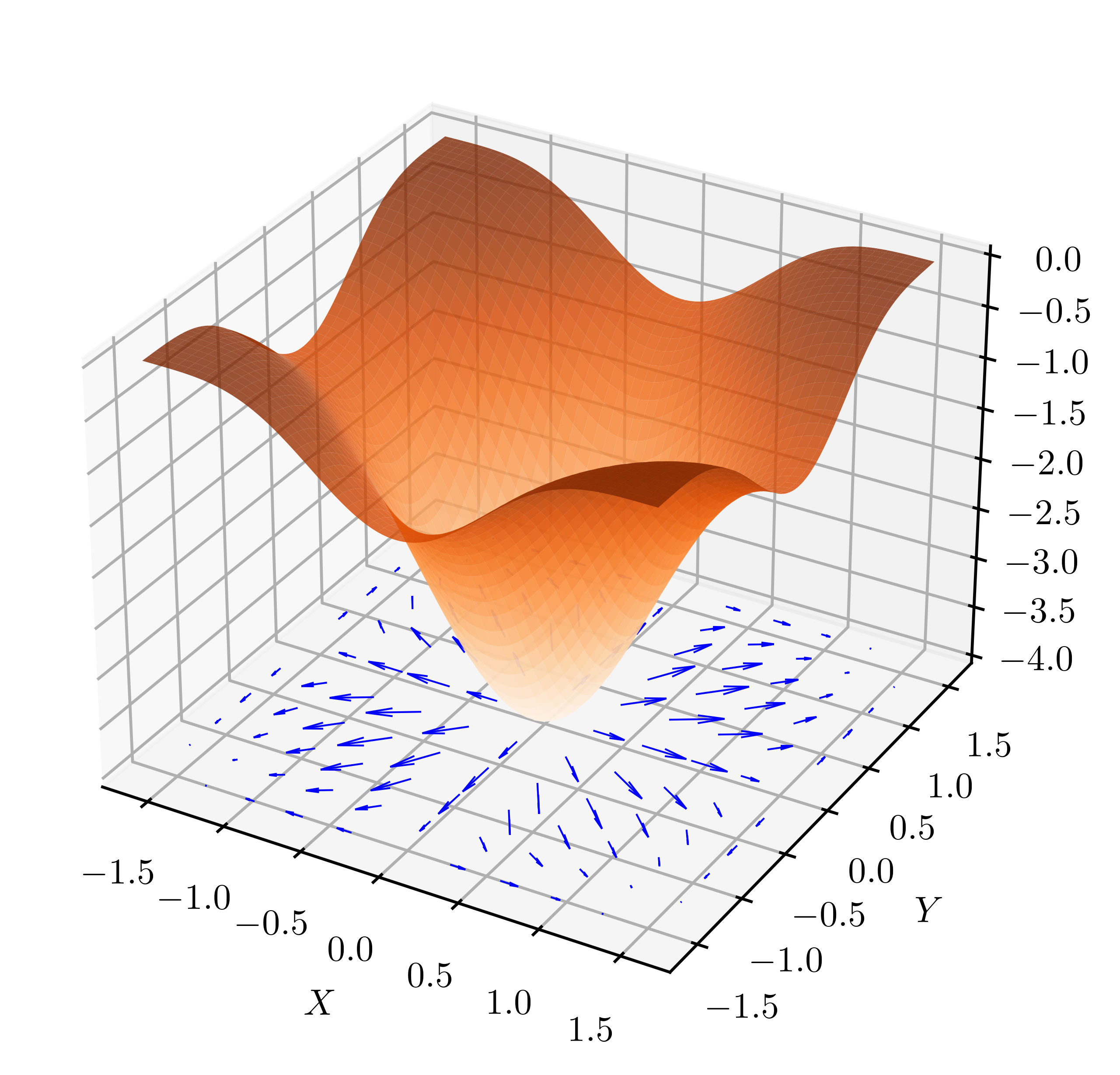\(\newcommand{\bmu}{\boldsymbol{\mu}}\) \(\newcommand{\bSigma}{\boldsymbol{\Sigma}}\) \(\newcommand{\bfbeta}{\boldsymbol{\beta}}\) \(\newcommand{\bflambda}{\boldsymbol{\lambda}}\) \(\newcommand{\bgamma}{\boldsymbol{\gamma}}\) \(\newcommand{\bsigma}{{\boldsymbol{\sigma}}}\) \(\newcommand{\bpi}{\boldsymbol{\pi}}\) \(\newcommand{\btheta}{{\boldsymbol{\theta}}}\) \(\newcommand{\bphi}{\boldsymbol{\phi}}\) \(\newcommand{\balpha}{\boldsymbol{\alpha}}\) \(\newcommand{\blambda}{\boldsymbol{\lambda}}\) \(\renewcommand{\P}{\mathbb{P}}\) \(\newcommand{\E}{\mathbb{E}}\) \(\newcommand{\indep}{\perp\!\!\!\perp} \newcommand{\bx}{\mathbf{x}}\) \(\newcommand{\bp}{\mathbf{p}}\) \(\renewcommand{\bx}{\mathbf{x}}\) \(\newcommand{\bX}{\mathbf{X}}\) \(\newcommand{\by}{\mathbf{y}}\) \(\newcommand{\bY}{\mathbf{Y}}\) \(\newcommand{\bz}{\mathbf{z}}\) \(\newcommand{\bZ}{\mathbf{Z}}\) \(\newcommand{\bw}{\mathbf{w}}\) \(\newcommand{\bW}{\mathbf{W}}\) \(\newcommand{\bv}{\mathbf{v}}\) \(\newcommand{\bV}{\mathbf{V}}\) \(\newcommand{\bfg}{\mathbf{g}}\) \(\newcommand{\bfh}{\mathbf{h}}\) \(\newcommand{\horz}{\rule[.5ex]{2.5ex}{0.5pt}}\) \(\renewcommand{\S}{\mathcal{S}}\) \(\newcommand{\X}{\mathcal{X}}\) \(\newcommand{\var}{\mathrm{Var}}\) \(\newcommand{\pa}{\mathrm{pa}}\) \(\newcommand{\Z}{\mathcal{Z}}\) \(\newcommand{\bh}{\mathbf{h}}\) \(\newcommand{\bb}{\mathbf{b}}\) \(\newcommand{\bc}{\mathbf{c}}\) \(\newcommand{\cE}{\mathcal{E}}\) \(\newcommand{\cP}{\mathcal{P}}\) \(\newcommand{\bbeta}{\boldsymbol{\beta}}\) \(\newcommand{\bLambda}{\boldsymbol{\Lambda}}\) \(\newcommand{\cov}{\mathrm{Cov}}\) \(\newcommand{\bfk}{\mathbf{k}}\) \(\newcommand{\idx}[1]{}\) \(\newcommand{\xdi}{}\)
3.2. Background: review of differentiable functions of several variables#
We review the differential calculus of several variables. We highlight a few key results that will play an important role: the Chain Rule and the Mean Value Theorem.
3.2.1. Gradient#
Recall the definition of the gradient.
DEFINITION (Gradient) \(\idx{gradient}\xdi\) Let \(f : D \to \mathbb{R}\) where \(D \subseteq \mathbb{R}^d\) and let \(\mathbf{x}_0 \in D\) be an interior point of \(D\). Assume \(f\) is continuously differentiable at \(\mathbf{x}_0\). The (column) vector
is called the gradient of \(f\) at \(\mathbf{x}_0\). \(\natural\)
Note that the gradient is itself a function of \(\mathbf{x}\). In fact, unlike \(f\), it is a vector-valued function.

EXAMPLE: Consider the affine function
where \(\mathbf{x} = (x_1, \ldots, x_d), \mathbf{q} = (q_1, \ldots, q_d) \in \mathbb{R}^d\). The partial derivatives of the linear term are given by
So the gradient of \(f\) is
\(\lhd\)
EXAMPLE: Consider the quadratic function
where \(\mathbf{x} = (x_1, \ldots, x_d), \mathbf{q} = (q_1, \ldots, q_d) \in \mathbb{R}^d\) and \(P \in \mathbb{R}^{d \times d}\). The partial derivatives of the quadratic term are given by
where we used that all terms not including \(x_i\) have partial derivative \(0\).
This last expression is
So the gradient of \(f\) is
If \(P\) is symmetric, this further simplifies to \(\nabla f(\mathbf{x}) = P \,\mathbf{x} + \mathbf{q}\). \(\lhd\)
It will be useful to compute the derivative of a function \(f(\mathbf{x})\) of several variables along a parametric curve \(\mathbf{g}(t) = (g_1(t), \ldots, g_d(t)) \in \mathbb{R}^d\) for \(t\) in some closed interval of \(\mathbb{R}\). The following result is a special case of an important fact. We will use the following notation \(\mathbf{g}'(t) = (g_1'(t), \ldots, g_m'(t))\), where \(g_i'\) is the derivative of \(g_i\). We say that \(\mathbf{g}(t)\) is continuously differentiable at \(t = t_0\) if each of its component is.
EXAMPLE: (Parametric Line) The straight line between \(\mathbf{x}_0 = (x_{0,1},\ldots,x_{0,d})\) and \(\mathbf{x}_1 = (x_{1,1},\ldots,x_{1,d})\) in \(\mathbb{R}^d\) can be parametrized as
where \(t\) goes from \(0\) (at which \(\mathbf{g}(0) = \mathbf{x}_0\)) to \(1\) (at which \(\mathbf{g}(1) = \mathbf{x}_1\)).
Then
so that
\(\lhd\)
Recall the Chain Rule in the single-variable case. Quoting Wikipedia:
The simplest form of the chain rule is for real-valued functions of one real variable. It states that if \(g\) is a function that is differentiable at a point \(c\) (i.e. the derivative \(g'(c)\) exists) and \(f\) is a function that is differentiable at \(g(c)\), then the composite function \({\displaystyle f\circ g}\) is differentiable at \(c\), and the derivative is \({\displaystyle (f\circ g)'(c)=f'(g(c))\cdot g'(c)}\).
Here is a straightforward generalization of the Chain Rule.
THEOREM (Chain Rule) \(\idx{chain rule}\xdi\) Let \(f : D_1 \to \mathbb{R}\), where \(D_1 \subseteq \mathbb{R}\), and let \(g : D_2 \to \mathbb{R}\), where \(D_2 \subseteq \mathbb{R}^d\). Assume that \(f\) is continuously differentiable at \(g(\mathbf{x}_0)\), an interior point of \(D_1\), and that \(g\) is continuously differentiable at \(\mathbf{x}_0\), an interior point of \(D_2\). Then
\(\sharp\)
Proof: We apply the Chain Rule for functions of one variable to the partial derivatives. For all \(i\),
Collecting the partial derivatives in a vector gives the claim. \(\square\)
Here is a different generalization of the Chain Rule. Again the composition \(f \circ \mathbf{g}\) denotes the function \(f \circ \mathbf{g}(t) = f (\mathbf{g}(t))\).
THEOREM (Chain Rule) Let \(f : D_1 \to \mathbb{R}\), where \(D_1 \subseteq \mathbb{R}^d\), and let \(\mathbf{g} : D_2 \to \mathbb{R}^d\), where \(D_2 \subseteq \mathbb{R}\). Assume that \(f\) is continuously differentiable at \(\mathbf{g}(t_0)\), an interior point of \(D_1\), and that \(\mathbf{g}\) is continuously differentiable at \(t_0\), an interior point of \(D_2\). Then
\(\sharp\)
Proof: To simplify the notation, suppose that \(f\) is a real-valued function of \(\mathbf{x} = (x_1, \ldots, x_d)\) whose components are themselves functions of \(t \in \mathbb{R}\). Assume \(f\) is continuously differentiable at \(\mathbf{x}(t)\). To compute the total derivative\(\idx{total derivative}\xdi\) \(\frac{\mathrm{d} f(t)}{\mathrm{d} t}\), let \(\Delta x_k = x_k(t + \Delta t) - x_k(t)\), \(x_k = x_k(t)\) and
We seek to compute the limit \(\lim_{\Delta t \to 0} \frac{\Delta f}{\Delta t}\). To relate this limit to partial derivatives of \(f\), we re-write \(\Delta f\) as a telescoping sum where each term involves variation of a single variable \(x_k\). That is,
Applying the Mean Value Theorem to each term gives
where \(0 < \theta_k < 1\) for \(k=1,\ldots,d\). Dividing by \(\Delta t\), taking the limit \(\Delta t \to 0\) and using the fact that \(f\) is continuously differentiable, we get
\(\square\)
As a first application of the Chain Rule, we generalize the Mean Value Theorem to the case of several variables. We will use this result later to prove a multivariable Taylor expansion result that will play a central role in this chapter.
THEOREM (Mean Value) \(\idx{mean value theorem}\xdi\) Let \(f : D \to \mathbb{R}\) where \(D \subseteq \mathbb{R}^d\). Let \(\mathbf{x}_0 \in D\) and \(\delta > 0\) be such that \(B_\delta(\mathbf{x}_0) \subseteq D\). If \(f\) is continuously differentiable on \(B_\delta(\mathbf{x}_0)\), then for any \(\mathbf{x} \in B_\delta(\mathbf{x}_0)\)
for some \(\xi \in (0,1)\), where \(\mathbf{p} = \mathbf{x} - \mathbf{x}_0\). \(\sharp\)
One way to think of the Mean Value Theorem is as a \(0\)-th order Taylor expansion. It says that, when \(\mathbf{x}\) is close to \(\mathbf{x}_0\), the value \(f(\mathbf{x})\) is close to \(f(\mathbf{x}_0)\) in a way that can be controlled in terms of the gradient in the neighborhood of \(\mathbf{x}_0\). From this point of view, the term \(\nabla f(\mathbf{x}_0 + \xi \mathbf{p})^T \mathbf{p}\) is called the Lagrange remainder.
Proof idea: We apply the single-variable result and the Chain Rule.
Proof: Let \(\phi(t) = f(\boldsymbol{\alpha}(t))\) where \(\boldsymbol{\alpha}(t) = \mathbf{x}_0 + t \mathbf{p}\). Observe that \(\phi(0) = f(\mathbf{x}_0)\) and \(\phi(1) = f(\mathbf{x})\). By the Chain Rule and the parametric line example,
In particular, \(\phi\) has a continuous first derivative on \([0,1]\). By the Mean Value Theorem in the single-variable case
for some \(\xi \in (0,t)\). Plugging in the expressions for \(\phi(0)\) and \(\phi'(\xi)\) and taking \(t=1\) gives the claim. \(\square\)
3.2.2. Second-order derivatives#
One can also define higher-order derivatives. We start with the single-variable case, where \(f : D \to \mathbb{R}\) with \(D \subseteq \mathbb{R}\) and \(x_0 \in D\) is an interior point of \(D\). Note that, if \(f'\) exists in \(D\), then it is itself a function of \(x\). Then the second derivative at \(x_0\) is
provided the limit exists.
In the several variable case, we have the following:
DEFINITION (Second Partial Derivatives and Hessian) \(\idx{second partial derivatives}\xdi\) \(\idx{Hessian}\xdi\) Let \(f : D \to \mathbb{R}\) where \(D \subseteq \mathbb{R}^d\) and let \(\mathbf{x}_0 \in D\) be an interior point of \(D\). Assume that \(f\) is continuously differentiable in an open ball around \(\mathbf{x}_0\). Then \(\partial f(\mathbf{x})/\partial x_i\) is itself a function of \(\mathbf{x}\) and its partial derivative with respect to \(x_j\), if it exists, is denoted by
To simplify the notation, we write this as \(\partial^2 f(\mathbf{x}_0)/\partial x_i^2\) when \(j = i\). If \(\partial^2 f(\mathbf{x})/\partial x_j \partial x_i\) and \(\partial^2 f(\mathbf{x})/\partial x_i^2\) exist and are continuous in an open ball around \(\mathbf{x}_0\) for all \(i, j\), we say that \(f\) is twice continuously differentiable at \(\mathbf{x}_0\).
The matrix of second derivatives is called the Hessian and is denoted by
\(\natural\)
Like \(f\) and the gradient \(\nabla f\), the Hessian \(\mathbf{H}_f\) is a function of \(\mathbf{x}\). It is a matrix-valued function however.
When \(f\) is twice continuously differentiable at \(\mathbf{x}_0\), its Hessian is a symmetric matrix.
THEOREM (Symmetry of the Hessian) \(\idx{symmetry of the Hessian}\xdi\) Let \(f : D \to \mathbb{R}\) where \(D \subseteq \mathbb{R}^d\) and let \(\mathbf{x}_0 \in D\) be an interior point of \(D\). Assume that \(f\) is twice continuously differentiable at \(\mathbf{x}_0\). Then for all \(i \neq j\)
\(\sharp\)
Proof idea: Two applications of the Mean Value Theorem show that the limits can be interchanged.
Proof: By definition of the partial derivative,
for some \(\theta_j \in (0,1)\). Note that, on the third line, we rearranged the terms and, on the fourth line, we applied the Mean Value Theorem to \(f(\mathbf{x}_0 + h_i \mathbf{e}_i + h_j \mathbf{e}_j) - f(\mathbf{x}_0 + h_j \mathbf{e}_j)\) as a continuously differentiable function of \(h_j\).
Because \(\partial f/\partial x_j\) is continuously differentiable in an open ball around \(\mathbf{x}_0\), a second application of the Mean Value Theorem gives for some \(\theta_i \in (0,1)\)
The claim then follows from the continuity of \(\partial^2 f/\partial x_i \partial x_j\). \(\square\)
EXAMPLE: Consider the quadratic function
Recall that the gradient of \(f\) is
To simplify the calculation, let \(B = \frac{1}{2}[P + P^T]\) and denote the rows of \(B\) by \(\mathbf{b}_1^T, \ldots,\mathbf{b}_d^T\).
Each component of \(\nabla f\) is an affine function of \(\mathbf{x}\), specifically,
Row \(i\) of the Hessian is simply the gradient transposed of \(\frac{\partial f (\mathbf{x})}{\partial x_i}\) which, by our previous results, is
Putting this together we get
Observe that this is indeed a symmetric matrix. \(\lhd\)
Self-assessment quiz (with help from Claude, Gemini, and ChatGPT)
1 What does it mean for a function \(f\) to be continuously differentiable at \(x_0\)?
a) \(f\) is continuous at \(x_0\).
b) All partial derivatives of \(f\) exist at \(x_0\).
c) All partial derivatives of \(f\) exist and are continuous in an open ball around \(x_0\).
d) The gradient of \(f\) is zero at \(x_0\).
2 What is the gradient of a function \(f : D \to \mathbb{R}\), where \(D \subseteq \mathbb{R}^d\), at a point \(x_0 \in D\)?
a) The rate of change of \(f\) with respect to \(x\) at \(x_0\)
b) The vector of all second partial derivatives of \(f\) at \(x_0\)
c) The vector of all first partial derivatives of \(f\) at \(x_0\)
d) The matrix of all second partial derivatives of \(f\) at \(x_0\)
3 Which of the following statements is true about the Hessian matrix of a twice continuously differentiable function?
a) It is always a diagonal matrix.
b) It is always a symmetric matrix.
c) It is always an invertible matrix.
d) It is always a positive definite matrix.
4 Let \(f(x, y, z) = x^2 + y^2 - z^2\). What is the Hessian matrix of \(f\)?
a) \(\begin{pmatrix} 2 & 0 & 0 \\ 0 & 2 & 0 \\ 0 & 0 & -2 \end{pmatrix}\)
b) \(\begin{pmatrix} 2x & 2y & -2z \end{pmatrix}\)
c) \(\begin{pmatrix} 2 & 0 \\ 0 & 2 \end{pmatrix}\)
d) \(\begin{pmatrix} 0 & 0 & 0 \\ 0 & 0 & 0 \\ 0 & 0 & 0 \end{pmatrix}\)
5 What is the Hessian matrix of the quadratic function \(f(x) = \frac{1}{2}x^TPx + q^Tx + r\), where \(P \in \mathbb{R}^{d \times d}\) and \(q \in \mathbb{R}^d\)?
a) \(H_f(x) = P\)
b) \(H_f(x) = P^T\)
c) \(H_f(x) = \frac{1}{2}[P + P^T]\)
d) \(H_f(x) = [P + P^T]\)
Answer for 1: c. Justification: The text states, “If \(f\) exists and is continuous in an open ball around \(x_0\) for all \(i\), then we say that \(f\) is continuously differentiable at \(x_0\).”
Answer for 2: c. Justification: From the text: “The (column) vector \(\nabla f(x_0) = ( \frac{\partial f(x_0)}{\partial x_1}, \ldots, \frac{\partial f(x_0)}{\partial x_d})\) is called the gradient of \(f\) at \(x_0\).”
Answer for 3: b). Justification: The text states: “When \(f\) is twice continuously differentiable at \(x_0\), its Hessian is a symmetric matrix.”
Answer for 4: a). Justification: The Hessian is the matrix of second partial derivatives:
Answer for 5: c. Justification: The text shows that the Hessian of the quadratic function is \(H_f(x) = \frac{1}{2}[P + P^T]\).
